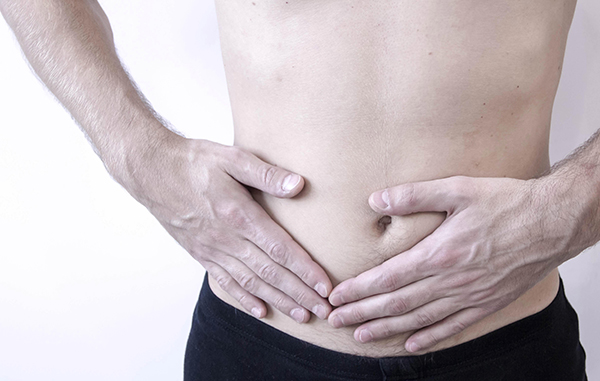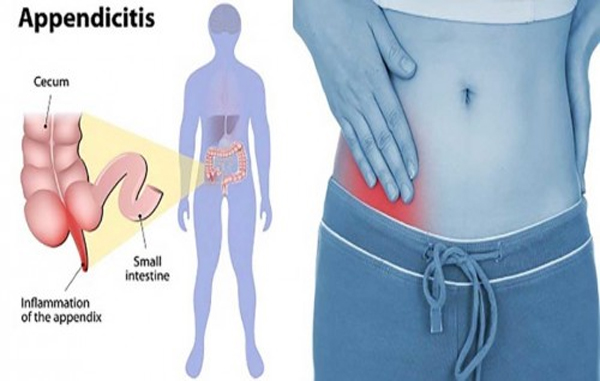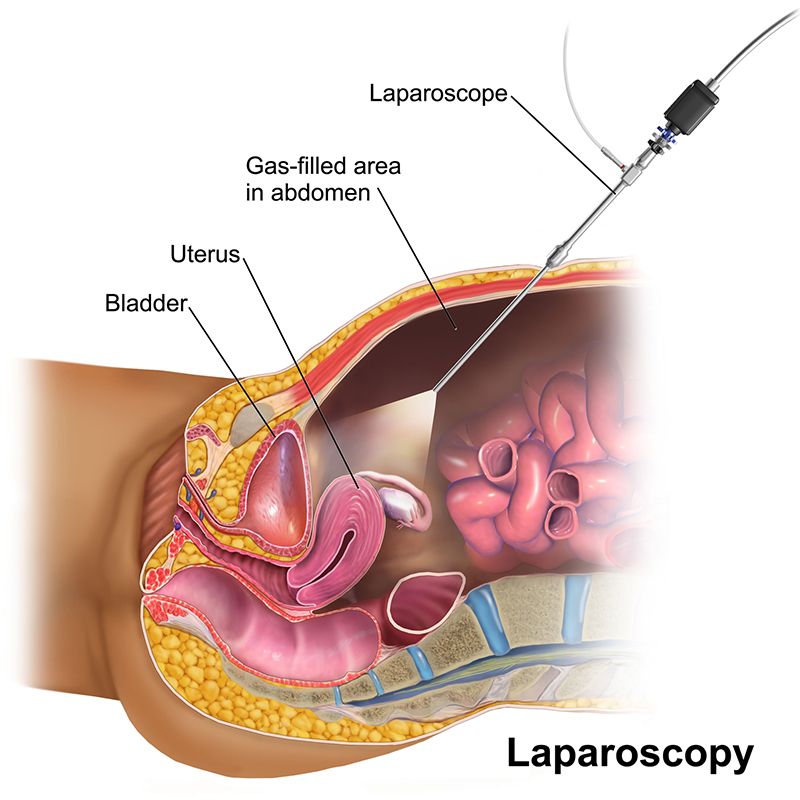What is Appendicitis?
- Appendix is a narrow, hollow muscular tube present near the junction of the small and large intestine. It has no significant function in human beings.
- Appendicitis is the inflammation of appendix (infection or swelling). The term acute Appendicitis means sudden development of the inflammatory process.
- It is most commonly seen in the second decade of life (adolescence), though it can occur in any age group.
- In almost 80% of cases of acute appendicitis are caused due to obstruction of lumen of appendix. The reason of obstruction could be a faecolith (i.e. hard faecal matter), worms if present in the intestines and rarely a foreign body like seeds.


Signs & Symptoms of Appendicitis
- Severe pain around the navel which shifts after few hours to the right lower abdomen. Coughing and straining cause an increase in the pain. Pain is accompanied by nausea and vomiting. Less common complaints include loose stools.
- The clinical signs and symptoms as mentioned above are the most important indications for reaching a diagnosis. In addition, raised total blood count confirms the diagnosis.
- Acute appendicitis is the commonest abdominal emergency and requires surgery.
Laparoscopic Appendix Surgery
- An abdomen ultrasound may help in reaching the diagnosis in case the clinical examination and other investigations are inconclusive.
- The treatment of acute appendicitis is removal of the appendix (i.e. Appendicectomy). This can be done by an open technique or laparoscopically.
- Laparoscopic appendicectomy is performed by making three tiny (3-5-10 mm) incisions through which the telescope and instruments are introduced and the appendix is removed.
- The advantage of laparoscopy over open technique is less pain, early recovery and excellent cosmetic results. Also, laparoscopically the entire abdomen and pelvis can be inspected to rule out any other pathology.
Inflamed appendix can create emergency situation and needs to be tended at once. The earlier signs of the appendicitis are feeble and often ignored. Open appendicitis surgery requires making a large cut on the skin and also has other disadvantages; therefore, Laparoscopic appendix surgery is preferred.


Pre & Post Surgery Instructions
- Any pre-op instructions that are to be given to you by your surgeon vary as per your specific case.
- After the operation you will be kept in the recovery room. This period may vary from few minutes to few hours. The anaesthetist decides about your shifting to room. The decision depends on many technical factors.
- You may feel nauseated in the immediate post-operative period, and you may even vomit which should not cause any worry. This generally gets over after few hours.
- You are allowed to have soft diet from the next morning at breakfast. And it is important that to prevent feeling bloated you should have small frequent meals for some days.
Cost of Appendicitis Surgery
Cost of Laparoscopic Appendectomy or open appendicitis surgery depends on the condition of the patient and thus the cost of the appendix surgery differs greatly from patient to patient.
Mail us your query at sarvhitgastrocity@gmail.com for an estimate and evaluation by the Surgeon.